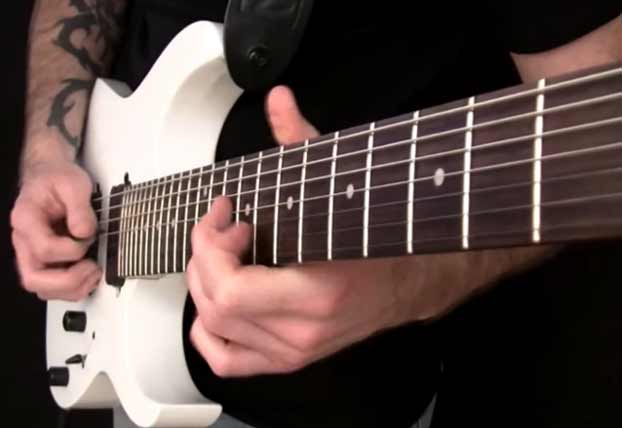How to Memorize Scales and Unlock the Fretboard

Here's is an unorthodox method of memorizing scales using the common three-note-per-string shapes we often employ during runs.
Let’s say that you wanted to learn the E minor scale (E Aeolian mode). Normally you’d learn the box positions of the scale and drill it from there. Learning a new scale using a box position is a good way of becoming familiar with the intervals involved, but we’re going to be different and move our scale onto one string.
By doing this, we take the focus away from memorizing a shape and instead focus on the sound of the scale itself, because this is what really counts when learning a scale or mode. If we haven’t internalized how it sounds, all we’re doing is trying to recall shapes that mean very little to us.
Using the high E string, move through the intervals of the scale slowly. You can start at the 12th fret and ascend to your highest fret, or start at the highest fret and move down to the 12th. For any modes in the key of E, a 24-fret guitar will help as you can start at the 24th fret and work your way down. If you have fewer than 24 frets, start at the 12th fret and work up. (For other keys, just shift your position so you can cover a whole octave on one string.)
As you do so, notice the relationship between the sound of the next interval and the distance you need to move, whether it be whole tone or semitone. If you haven’t done a lot of ear training, this is a great way to get your fingers better at predicting where to be, according to the sound you require in your head.
The next step is to break down the scale into three-note-per-string shapes. For all the modes of the major scale and of the melodic minor scale, you’ll notice the same three shapes repeating. As you’ll see in the video below, you can step down or up by playing repetitions of these shapes. When you’re fairly confident you can move through the scale on the E string, it’s time to apply the same approach to the B string. As you’ll see, the locations of the patterns will change, but the patterns themselves are the same three shapes. These shapes can be applied all across the neck in any mode.
When you work on the modes of the harmonic minor scale, you’ll encounter two different shapes (shown in the video). However, the approach is the same. You can cycle these five shapes up and down one string until you internalize how that mode sounds and how to navigate it. After some time, the thought is taken out of the process and your fingers pick the right path according to the next interval being "dictated" internally by ear.
Ben Higgins started playing guitar at age 10. He’s released five solo albums and continues to teach guitarists from around the world. In 2012, he released the YouTube video “30 Shredders in One Solo,” in which he emulated the style of 30 of the world’s greatest guitarists. He followed it up with “30 Misplaced Shredders” and “Another 30 Shredders." In 2016, Ben developed his “Badass…” online courses, which are aimed at improving people’s technique in picking, sweeping and hand synchronization. To find out more about Ben and his courses, visit benhigginsofficial.com.
Get The Pick Newsletter
All the latest guitar news, interviews, lessons, reviews, deals and more, direct to your inbox!
“There are so many sounds to be discovered when you get away from using a pick”: Jared James Nichols shows you how to add “snap, crackle and pop” to your playing with banjo rolls and string snaps
Don't let chord inversions bamboozle you. It's simply the case of shuffling the notes around







![Joe Bonamassa [left] wears a deep blue suit and polka-dotted shirt and plays his green refin Strat; the late Irish blues legend Rory Gallagher [right] screams and inflicts some punishment on his heavily worn number one Stratocaster.](https://cdn.mos.cms.futurecdn.net/cw28h7UBcTVfTLs7p7eiLe.jpg)


